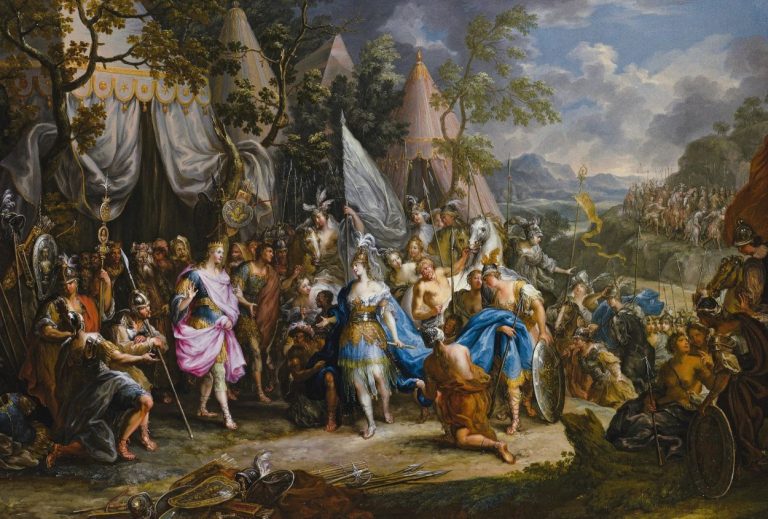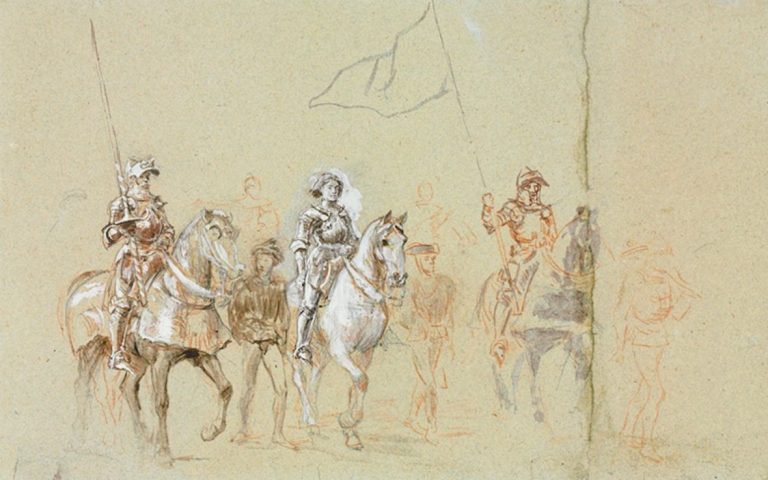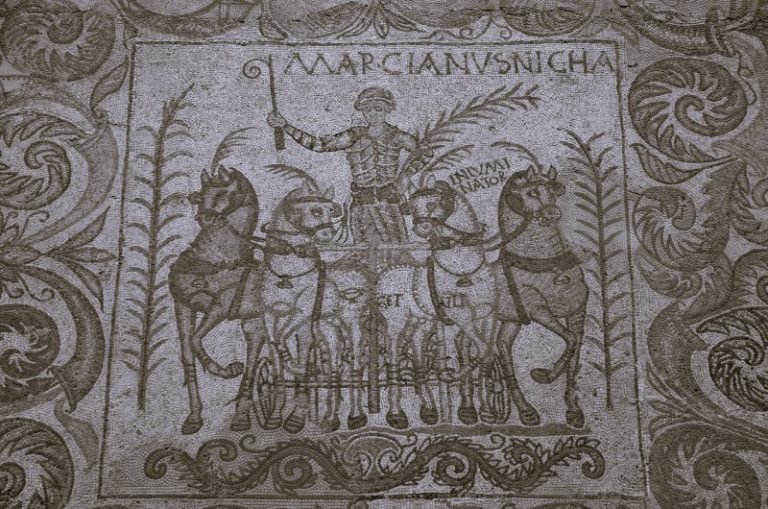
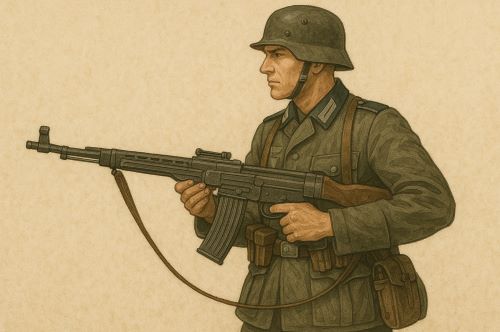
Its story is a testament to the contradiction at the heart of modern war: that even the most ideologically rigid regimes must sometimes yield to material necessity.

By Matthew A. McIntosh
Public Historian
Brewminate
Introduction: Between Rifle and Submachine Gun
Amid the twilight collapse of the Third Reich, a technological rupture emerged from the chaos—one so profound that its legacy would reach far beyond the barbed wire of Eastern Front trenches. The Sturmgewehr 44, or StG 44, was a weapon conceived under the weight of ideological absolutism, but engineered with startling pragmatism. In it, the Nazis created what is widely recognized as the first truly successful assault rifle: a select-fire, intermediate-caliber firearm that defied conventional categories.
The StG 44’s genesis is not simply a tale of innovation. It is a study in contradiction. Designed by a regime committed to an idealized, even archaic, vision of martial masculinity centered on the rifleman, the StG 44 nonetheless subverted that very model. Its appearance on the battlefield marked the death knell of 19th-century firepower logic and opened the path toward the industrial soldier, whose lethality lay not in marksmanship but in volume, maneuver, and fire discipline.
Understanding the StG 44 requires more than a technical overview. It demands a reckoning with the conditions that birthed it, the doctrine it transformed, and the symbolic weight it carried in a regime obsessed with purity and ruin. It was not merely a weapon of war—it was a harbinger of the wars to come.
Precedents and Doctrinal Discontent
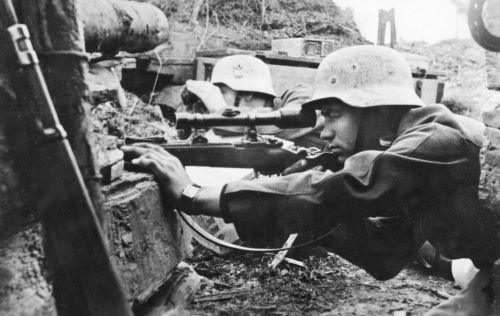
Germany entered the Second World War armed primarily with the Karabiner 98k, a bolt-action rifle that epitomized early 20th-century military orthodoxy. It was reliable, powerful, and accurate at long ranges. Yet by 1941, as German troops encountered the vast expanses and shifting tempo of the Eastern Front, its limitations became painfully evident. The Kar98k was slow, cumbersome in close quarters, and overpowered for most infantry engagements, which occurred at ranges under 300 meters.1
In contrast, Soviet forces wielded the PPSh-41, a submachine gun that delivered high volumes of fire at close range. Though less accurate and less powerful, it dominated in urban combat and dense forest skirmishes. The German high command, historically resistant to fully automatic weapons in infantry hands, began to take notice. Reports from the front increasingly called for a weapon that could bridge the chasm between the long-range rifle and the short-range submachine gun.2
The concept of an intermediate cartridge gained traction: something more potent than pistol rounds but less punishing than full-power rifle ammunition. By 1942, the groundwork for a new kind of firearm had been laid, not through visionary planning, but from the grim pragmatism of a war turning against its makers.
Designing the Sturmgewehr: Innovation in Desperation
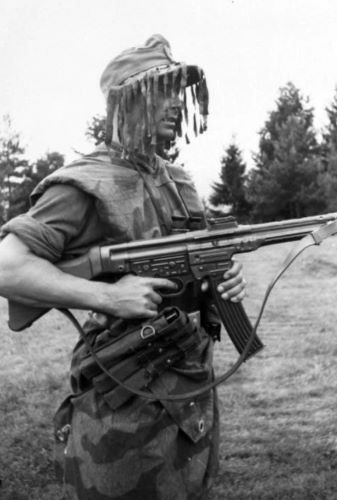
The StG 44 emerged from a series of prototypes, including the Maschinenkarabiner 42(H) and 42(W), developed by Haenel and Walther respectively. The Haenel version, designed by Hugo Schmeisser, ultimately prevailed. It was chambered in 7.92×33mm Kurz, an intermediate round that enabled controllable automatic fire and reduced recoil.3 This cartridge was the StG 44’s conceptual spine. Its very name, Kurz, meaning “short, signaled a departure from the long-range obsessions of previous military doctrine.
Technically, the StG 44 was both conservative and radical. It employed stamped steel components for quicker mass production and featured a gas-operated, tilting-bolt system. Its select-fire capability allowed soldiers to switch between semi-automatic and fully automatic modes. While its accuracy at long range suffered compared to bolt-action rifles, it excelled in suppressive fire and mobile infantry tactics. In close- to mid-range firefights, it transformed battlefield dynamics.
The weapon’s aesthetic was utilitarian: matte black, angular, and inelegant. There was no romanticism here. It was the shape of total war: pressed steel, composite parts, and brutal purpose. It was also, ironically, born under false pretenses. Adolf Hitler had initially resisted the project, fearing it would undermine production of existing arms. The weapon was introduced to him under the misleading name Maschinenpistole 43 to avoid the rifle classification he had previously vetoed.4
When Hitler finally approved its distribution in 1944, now under the name Sturmgewehr, or “assault rifle”, the weapon had already demonstrated its worth in limited trials. The name was politically charged. It was not just a descriptor, but a rhetorical gesture, merging the myth of the German Sturmtruppen of World War I with the machine-age realism of 1940s mechanized war.
Battlefield Performance and Tactical Consequence
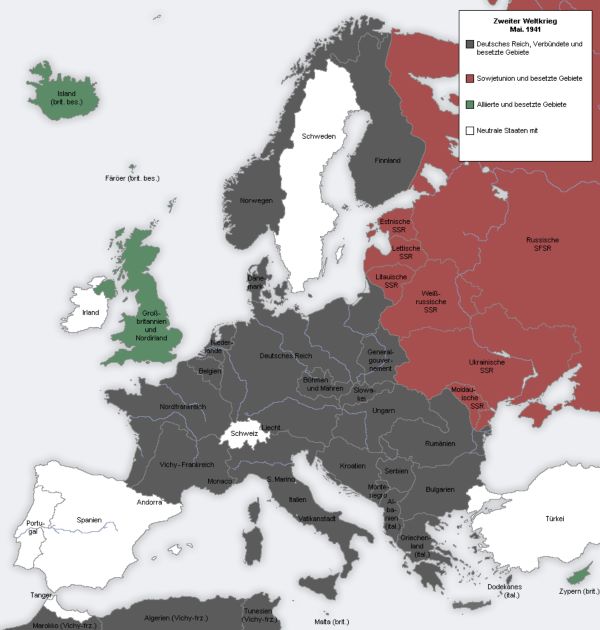
Though only about 425,000 StG 44 units were produced before the war ended,5 its impact on the battlefield was disproportionately large. German troops equipped with the weapon in late-war operations reported dramatic increases in squad firepower. The rifle allowed individual soldiers to engage effectively at all common combat distances without switching weapons. It reduced dependency on separate support units and encouraged more fluid movement.
In the Eastern Front’s urban rubble and forest thickets, the StG 44 gave German infantry the ability to suppress and advance with fire superiority. Though not without flaws (it was heavy, and early models suffered from mechanical quirks) it marked a decisive step toward the general-purpose individual weapon.
Crucially, the StG 44 shifted the center of infantry combat from precision to projection. Marksmanship was no longer the gold standard; suppressive fire and maneuver became the organizing principles of small-unit tactics. The rifleman became a fire team. The squad became a system.
This change echoed far beyond German doctrine. Postwar Soviet observers, recognizing the weapon’s effectiveness, accelerated their own development of an intermediate-caliber rifle, resulting in the iconic AK-47. Western powers, more skeptical at first, would follow suit with the M16 and other derivatives in the decades that followed.
Ideology and Irony: The Nazi Vision Undone
There is a bitter irony in the Sturmgewehr’s development. Nazi ideology valorized the heroic, individual soldier: racially pure, disciplined, and armed with weapons befitting his supposed spiritual superiority. The rifle, in this mythos, was an extension of the warrior’s will. The StG 44, however, undercut this narrative. It mechanized the soldier’s role. It reduced the need for specialized training. It replaced selective lethality with volume. In essence, it proletarianized the infantryman.
This ideological dissonance may partly explain Hitler’s initial resistance. His vision of war, shaped by trench heroism and nationalist romanticism, could not easily accommodate a weapon whose logic was industrial, collective, and pragmatic. Yet the war demanded compromise. The StG 44 was, in this sense, a weapon of realism forged inside a regime of delusion.
Its design also anticipated the postwar world far more than the world it was built to defend. In the ashes of the Third Reich, its form would be reborn not as a symbol of Aryan dominance, but as the standard bearer of modern military doctrine across ideological boundaries, from Warsaw Pact militias to NATO peacekeepers.
Legacy and Echo: From Kalashnikov to Now
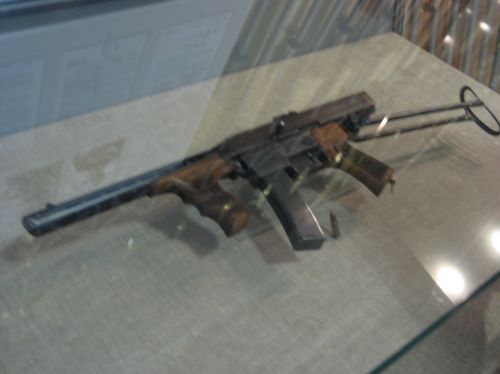
The lineage from the StG 44 to the AK-47 is not strictly linear, but the influence is clear. Soviet engineers studied captured StG 44 rifles and drew lessons in ergonomics, cartridge selection, and manufacturing. Mikhail Kalashnikov himself downplayed the influence, but the structural similarities speak for themselves.6 The silhouette of modern infantry rifles bears the ghost of the Sturmgewehr.
More broadly, the StG 44 ushered in the concept of the assault rifle as a distinct category. Its blend of automatic fire, mid-range accuracy, and manageable recoil became the template for virtually every military rifle developed since. Its descendants have filled the hands of guerrillas and professionals alike, democratizing firepower across battlefields.
Yet its legacy is also philosophical. The StG 44 represents a turning point in how societies conceive of war. It embodies the industrialization of lethality at the individual level. It signals a world where the line between combatant and machine is increasingly blurred, where doctrine bends to the realities of production and distribution.
Conclusion: The Geometry of Fire, Rewritten
The Sturmgewehr 44 was not a technological leap forward in the abstract. It was the recalibration of an entire tactical logic, a rewriting of what it meant to fight with a gun in hand. It fused the rifle’s precision with the submachine gun’s volume, and in doing so, changed the calculus of infantry engagement. Though it arrived too late to alter the outcome of World War II, it forecast the future with unsettling clarity.
Its story is a testament to the contradiction at the heart of modern war: that even the most ideologically rigid regimes must sometimes yield to material necessity. It is also a reminder that technological progress is rarely linear or free of irony. The StG 44 was a weapon born of desperation, yet it outlived its creators. In a war of symbols, it became the most enduring one of all, not of triumph, but of transformation.
Appendix
Footnotes
- Matthew Ford, Weapon of Choice: Small Arms and the Culture of Military Innovation (New York: Oxford University Press, 2017), 32.
- Chris McNab, German Automatic Rifles 1941–45: Gew 41, Gew 43, FG 42 and StG 44 (Oxford: Osprey Publishing, 2013), 18.
- Peter R. Senich, The German Assault Rifle, 1935–1945 (Boulder: Paladin Press, 2008), 95.
- R. Blake Stevens, Full Circle: A Treatise on Roller Locking (Toronto: Collector Grade Publications, 2006), 142.
- Ian V. Hogg, German Small Arms of World War II (New York: Stackpole Books, 2016), 204.
- Edward Clinton Ezell, The AK47 Story: Evolution of the Kalashnikov Weapons (Harrisburg: Stackpole Books, 1986), 37.
Bibliography
- Ezell, Edward Clinton. The AK47 Story: Evolution of the Kalashnikov Weapons. Harrisburg: Stackpole Books, 1986.
- Ford, Matthew. Weapon of Choice: Small Arms and the Culture of Military Innovation. New York: Oxford University Press, 2017.
- Hogg, Ian V. German Small Arms of World War II. New York: Stackpole Books, 2016.
- McNab, Chris. German Automatic Rifles 1941–45: Gew 41, Gew 43, FG 42 and StG 44. Oxford: Osprey Publishing, 2013.
- Senich, Peter R. The German Assault Rifle, 1935–1945. Boulder: Paladin Press, 2008.
- Stevens, R. Blake. Full Circle: A Treatise on Roller Locking. Toronto: Collector Grade Publications, 2006.
Originally published by Brewminate, 07.29.2025, under the terms of a Creative Commons Attribution-NonCommercial-NoDerivatives 4.0 International license.
